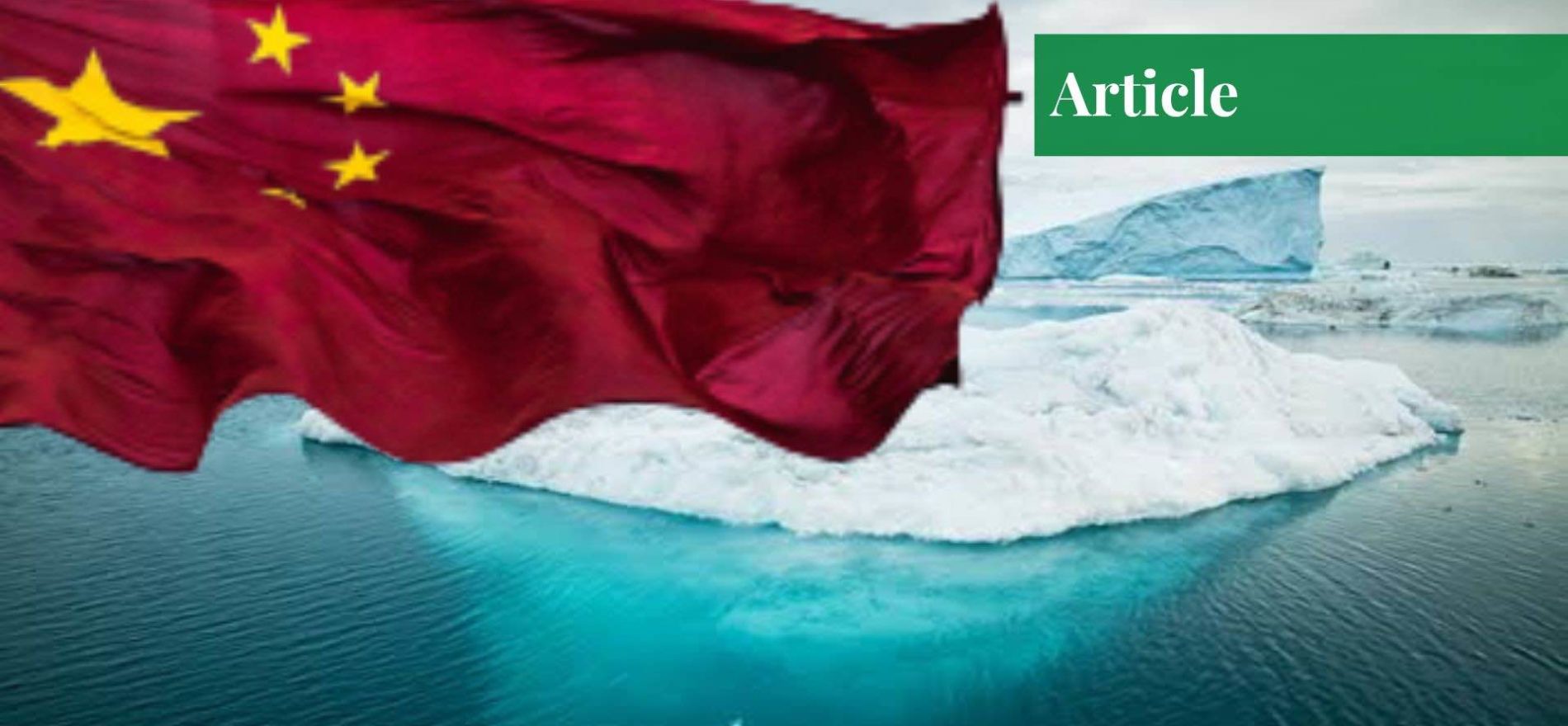The Arctic Region
In the 21st century, the Arctic region has grown with respect to its strategic, economic, and geopolitical importance. The Arctic’s unforgiving landscape has deterred human activity most of the time, but according to several reports, icecaps will recede to the point that the Arctic Ocean would be ice-free by 2050. These persistent changing meteorological conditions reveal not only new shipping routes but also deposits of natural resources.
The promise of wealth drives international interests in the region. By some estimates, the Arctic seabed contains about 13% of the world’s undiscovered crude oil and 30% of undiscovered natural gas. The Arctic Ocean’s marine ecology is undergoing significant environmental and developmental changes, with the ice extent in the Arctic gradually decreasing, making it easier for ships to move about and permitting formerly inaccessible routes to become accessible.

As the Arctic comes under the geopolitical spotlight, China feels compelled to travel north and establish its footing in the polar region. Contrary to the already existing sea routes, the Northern Sea Route and the Northwest Passage, the proposed northern route dubbed the “Polar Silk Road” would result in a significant reduction in the time and cost of travel across the continent.
Furthermore, the passage will allow China to circumvent several key strategic chokepoints while connecting Europe, Asia and North America, providing an alternate conduit for Chinese trade.
China’s Strategy towards the Arctic
China has expressed its aim to extend President Xi Jin Ping’s famed Belt and Road Initiative (BRI) to the Arctic by opening up new shipping lanes as a result of global warming. With rising commercial and diplomatic operations in the region, China’s interests varied even more, and the Arctic became a part of the country’s foreign policy. Since China lacks an Arctic Circle border or an Arctic Ocean coastline, its government is unable to make a legally sound claim.
China has made an attempt to get around this by increasing its physical presence in the Arctic Circle. In 1999, the government launched its first research mission to the polar region, and four years later, established its first research station, the Yellow River Station on Svalbard Island, while expanding its economic footprint in Iceland and Greenland. Despite not being an Arctic country, China has been an official observer on the Arctic Council since 2013.
The Polar Silk Road
In 2017, the China National Development and Reform Commission published a vision for maritime cooperation under the Belt and Road Initiative. This document emphasized the “Blue Economic Passage” that leads up to Europe via the Arctic Ocean. In 2018, Chinese Foreign Minister Wang Yi declared China to be a “Near-Arctic State.” The vision was detailed in a white paper published by China’s State Council Information.
The white paper disclosed the formal Arctic policy of China for the first time, calling for its transformation into a Polar Silk Road and laying out its ambitions to join the BRI. The primary concept behind the Polar Silk Road was to connect the Atlantic and Pacific oceans by a transpolar sea route that would cut through the middle of the Arctic Ocean and pass close to the North Pole.
It will link China’s project in the Arctic with its signature Belt and Road Initiative through logistic and transportation channels. The document mapped out the path for China’s future development ambitions in the region which included scientific, commercial, environmental, and resource extraction operations. The white paper emphasises the peaceful use of the Arctic and promotes the settlement of territory and maritime rights disputes by multilateral treaties such as the United Nations Conventions on the Law of Sea.
China is also interested in developing oil, gas, mineral, and other resources in the region, as well as other fossil energy, fishing, and tourism. China would do so in collaboration with other governments while respecting the cultures and traditions of the people of the Arctic, particularly indigenous peoples, and protecting the natural environment. According to the state-run Xinhua news agency, the FYP’s draft plan stated that China would participate in the pragmatic cooperation on the Arctic and the building of a Polar Silk Road.
Western Response
Despite its efforts to expand its physical presence, China requires long-term partners to achieve goals in the Arctic. China’s preferred partner is Russia, due to its rising regional interests and its substantial participation in Russia’s Yamal Liquefied Natural Gas project, which is expected to supply China with 4 million tons of LNG per year.
Chinese ships are well-positioned to make use of the Russian northern sea route, which connects China with Rotterdam. The United States of America sees China and Russia’s unified forces in the Arctic, as well as China’s expanding influence in the region, as a threat to the West. China’s Arctic plan has sparked worldwide concern, and it is often considered a double threat to the current world order, along with Russia’s militarization of the Arctic.
In March 2019, the European Union formally recognized Beijing as a strategic rival. The US even pushed Denmark to reject China’s offer to help build international airports in Greenland, promising that the US would invest instead. With the support of the US, Denmark also prevented China from purchasing an ancient military installation in Greenland in 2016.
If you want to submit your articles and/or research papers, please check the Submissions page.
The views and opinions expressed in this article/paper are the author’s own and do not necessarily reflect the editorial position of Paradigm Shift.



















